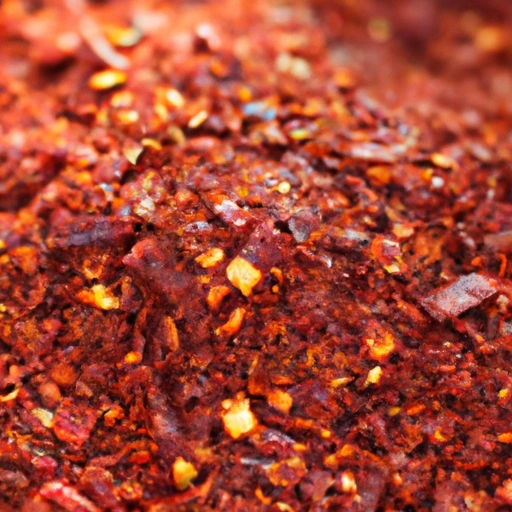Cayenne Pepper
Description

Cayenne pepper is a hot chili pepper frequently used to flavor dishes in cuisines worldwide. It is typically a moderately hot chili pepper used to achieve an ideal balance of spice and flavor. Cayenne pepper is available in various forms, including fresh, dried, and powdered, and is known for its bright red color and pungent, spicy taste.
Common uses
Cayenne pepper is commonly used to add heat and depth to dishes. It is a versatile spice that can be sprinkled over meals to finish, or it can be incorporated into sauces, rubs, and marinades to infuse them with its distinctive fiery flavor. Cayenne pepper is also a key ingredient in various spice blends and is often used in hot sauces.
Nutritional value
Calories
A teaspoon (about 5 grams) of cayenne pepper contains approximately 17 calories.
Protein
Cayenne pepper provides about 0.6 grams of protein per teaspoon.
Fat
There is a negligible amount of fat in cayenne pepper, roughly 0.9 grams per teaspoon.
Carbohydrates
Carbohydrates are present in cayenne pepper at about 3 grams per teaspoon.
Vitamins
Cayenne is a good source of Vitamin A, with a teaspoon providing about 44% of the daily recommended value. It also contains small amounts of vitamins E, C, and B6.
Minerals
Cayenne pepper contains minerals such as potassium, manganese, and a small amount of iron.
Health benefits
Cayenne pepper is known for its capsaicin content, which has been linked to various health benefits such as pain relief, reduced congestion, improved metabolic rate, and a lower risk of heart disease. Its anti-inflammatory properties can help to alleviate pain associated with arthritis and headaches.
Potential risks
While cayenne pepper can offer health benefits, excessive consumption may lead to gastrointestinal irritation, heartburn, or adverse reactions in individuals who are sensitive to spicy foods. Always consume in moderation and consider your tolerance level.
Common recipes
Cayenne pepper is used in many recipes including chili, curry dishes, hot sauces, and spice rubs for meats. It also adds a kick to dips, stews, soups, and marinades.
Cooking methods
Cayenne can be used in its raw form or cooked into a dish. When heated, it releases its flavor and oils, integrating the spice throughout the dish. It is commonly dry-toasted in a pan to release aroma and flavor before grinding.
Pairing with other ingredients
Cayenne pepper pairs well with meats, seafood, and plant-based proteins. It also complements other spices such as garlic, cumin, and paprika. For balancing the heat, it is often paired with dairy products like yogurt and sour cream or with sweet ingredients such as honey and sugar.
Summary
Cayenne pepper is a vibrant and robust spice that brings both heat and nuanced flavor to a wide array of dishes. Its health benefits and culinary versatility make it a beloved ingredient in kitchens around the world. Whether used sparingly or as the star of a dish, cayenne pepper adds a spark of excitement to any meal and is an essential spice in any food lover's pantry.